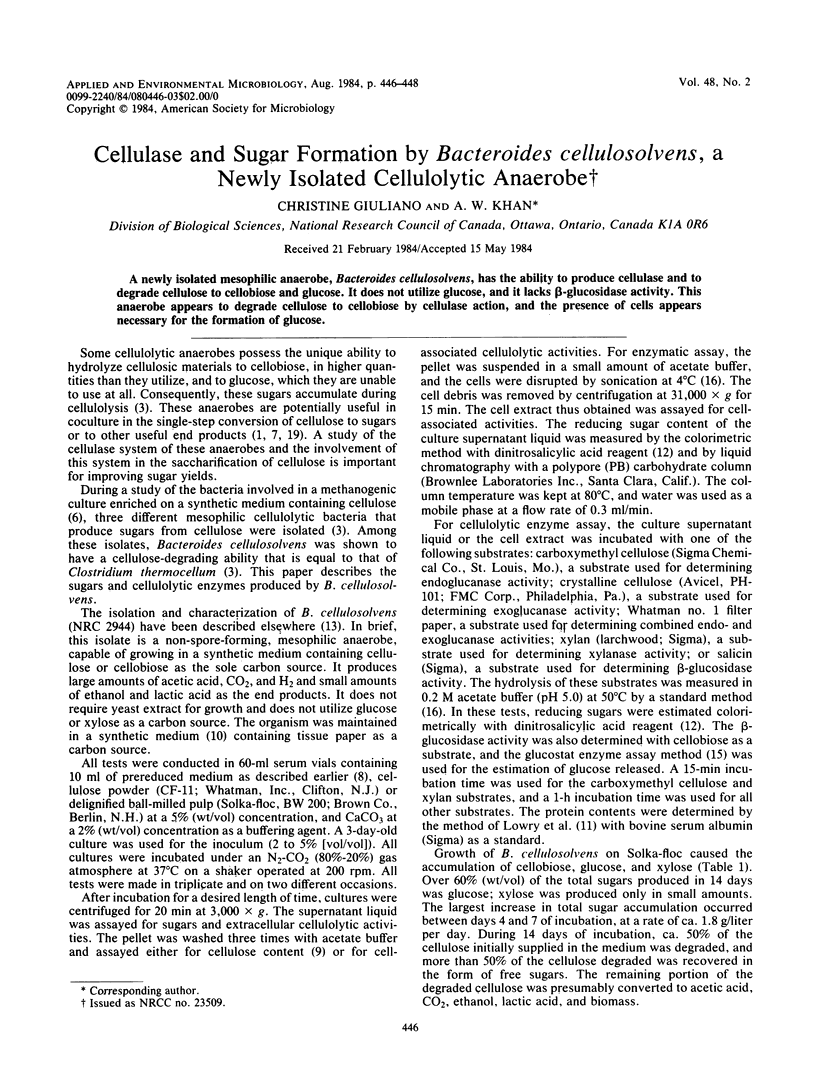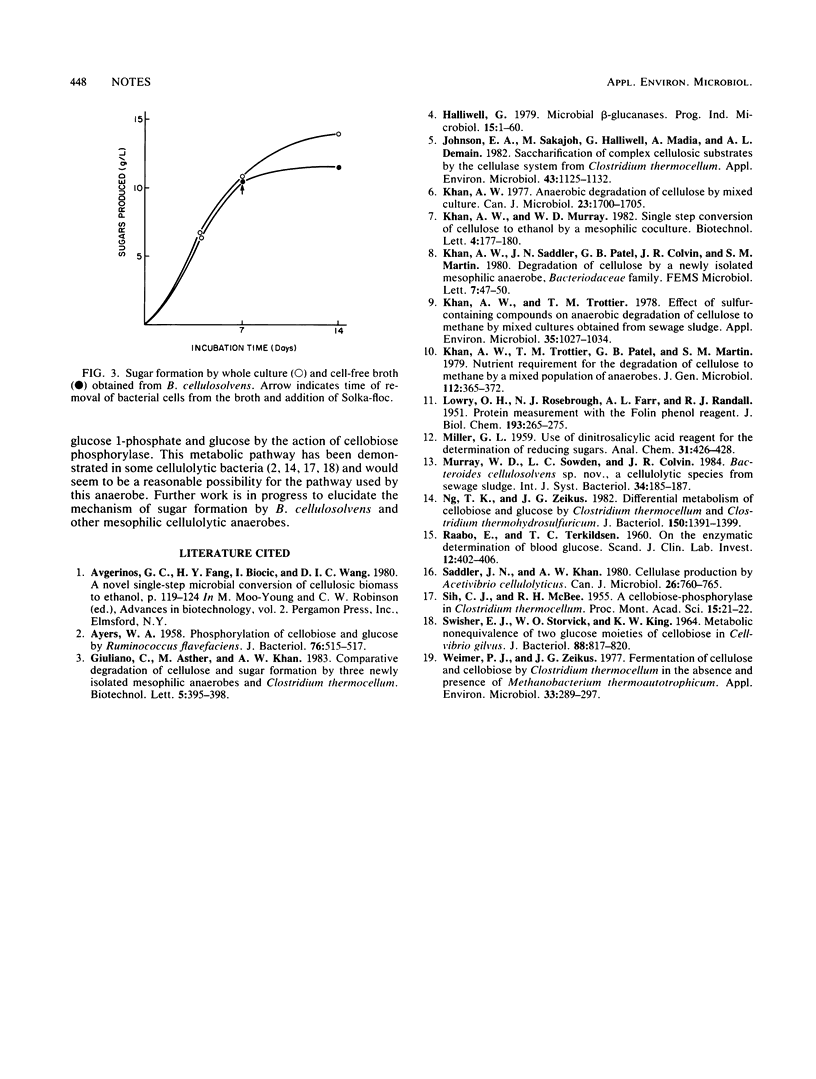Abstract
A newly isolated mesophilic anaerobe, Bacteroides cellulosolvens, has the ability to produce cellulase and to degrade cellulose to cellobiose and glucose. It does not utilize glucose, and it lacks β-glucosidase activity. This anaerobe appears to degrade cellulose to cellobiose by cellulase action, and the presence of cells appears necessary for the formation of glucose.
Full text
PDF


Selected References
These references are in PubMed. This may not be the complete list of references from this article.
- AYERS W. A. Phosphorylation of cellobiose and glucose by Ruminococcus flavefaciens. J Bacteriol. 1958 Nov;76(5):515–517. doi: 10.1128/jb.76.5.515-517.1958. [DOI] [PMC free article] [PubMed] [Google Scholar]
- Johnson E. A., Sakajoh M., Halliwell G., Madia A., Demain A. L. Saccharification of Complex Cellulosic Substrates by the Cellulase System from Clostridium thermocellum. Appl Environ Microbiol. 1982 May;43(5):1125–1132. doi: 10.1128/aem.43.5.1125-1132.1982. [DOI] [PMC free article] [PubMed] [Google Scholar]
- Khan A. W. Anaerobic degradation of cellulose by mixed culture. Can J Microbiol. 1977 Dec;23(12):1700–1705. doi: 10.1139/m77-245. [DOI] [PubMed] [Google Scholar]
- Khan A. W., Trottier T. M. Effect of sulfur-containing compounds on anaerobic degradation of cellulose to methane by mixed cultures obtained from sewage sludge. Appl Environ Microbiol. 1978 Jun;35(6):1027–1034. doi: 10.1128/aem.35.6.1027-1034.1978. [DOI] [PMC free article] [PubMed] [Google Scholar]
- LOWRY O. H., ROSEBROUGH N. J., FARR A. L., RANDALL R. J. Protein measurement with the Folin phenol reagent. J Biol Chem. 1951 Nov;193(1):265–275. [PubMed] [Google Scholar]
- Ng T. K., Zeikus J. G. Differential metabolism of cellobiose and glucose by Clostridium thermocellum and Clostridium thermohydrosulfuricum. J Bacteriol. 1982 Jun;150(3):1391–1399. doi: 10.1128/jb.150.3.1391-1399.1982. [DOI] [PMC free article] [PubMed] [Google Scholar]
- RAABO E., TERKILDSEN T. C. On the enzymatic determination of blood glucose. Scand J Clin Lab Invest. 1960;12(4):402–407. doi: 10.3109/00365516009065404. [DOI] [PubMed] [Google Scholar]
- SWISHER E. J., STORVICK W. O., KING K. W. METABOLIC NONEQUIVALENCE OF THE TWO GLUCOSE MOIETIES OF CELLOBIOSE IN CELLVIBRIO GILVUS. J Bacteriol. 1964 Oct;88:817–820. doi: 10.1128/jb.88.4.817-820.1964. [DOI] [PMC free article] [PubMed] [Google Scholar]
- Weimer P. J., Zeikus J. G. Fermentation of cellulose and cellobiose by Clostridium thermocellum in the absence of Methanobacterium thermoautotrophicum. Appl Environ Microbiol. 1977 Feb;33(2):289–297. doi: 10.1128/aem.33.2.289-297.1977. [DOI] [PMC free article] [PubMed] [Google Scholar]


